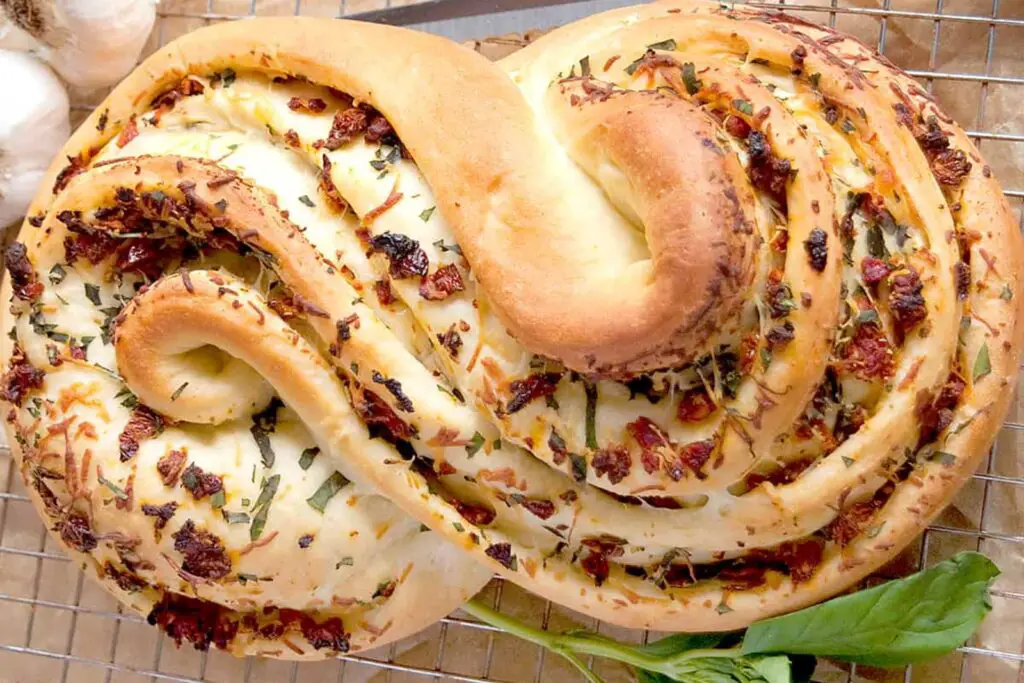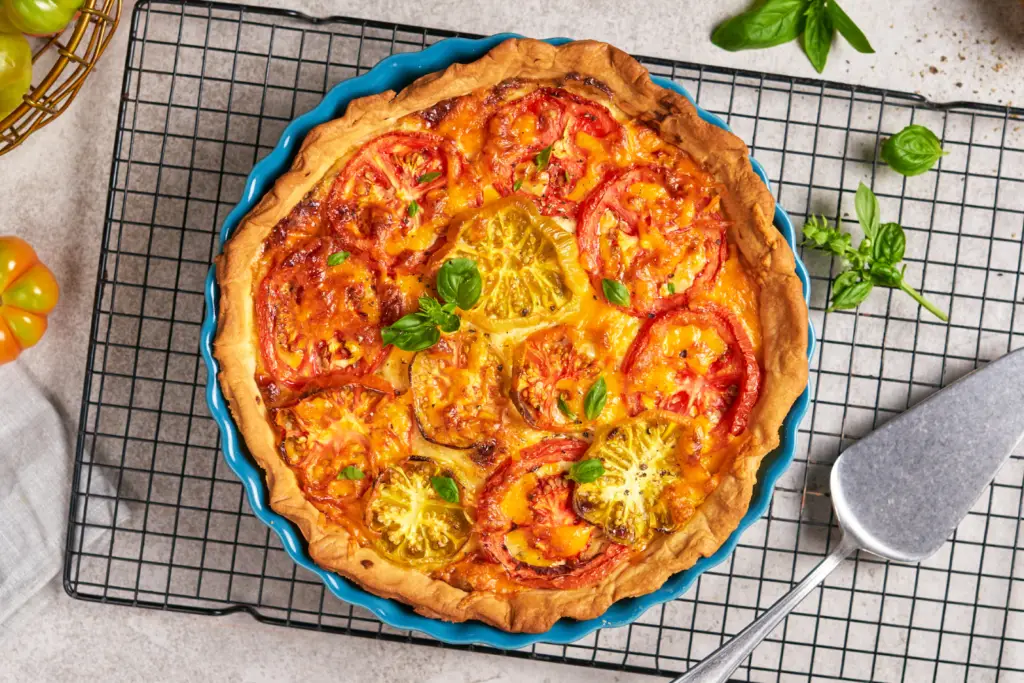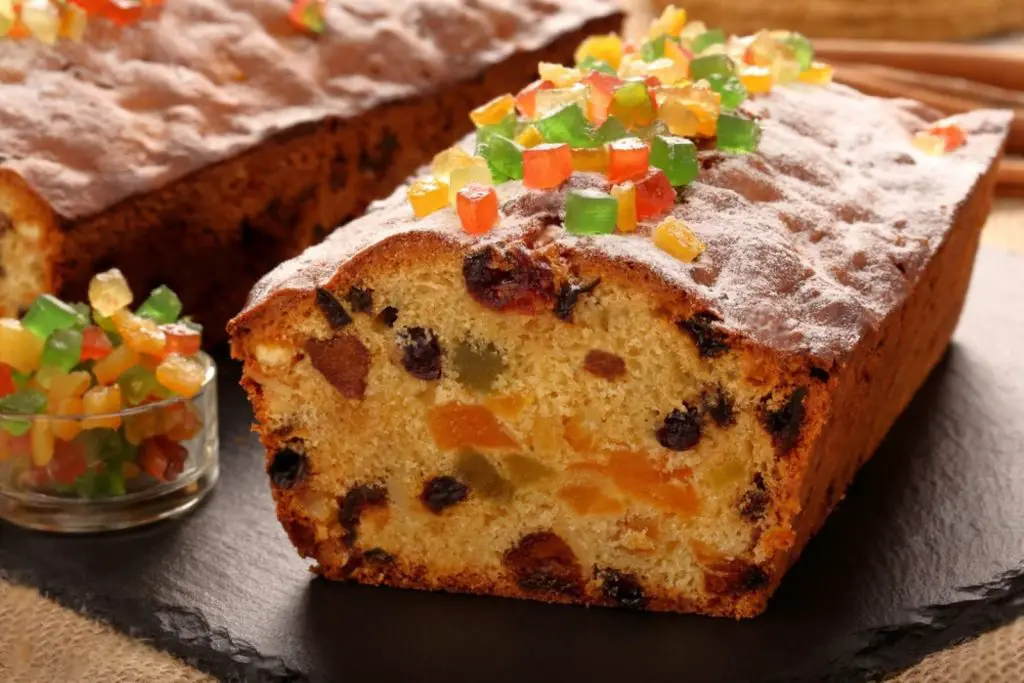
Turkey gravy, a luscious and essential companion to roasted turkeys and hearty meals, holds the power to transform a simple dish into a culinary masterpiece. Crafted from the flavorful drippings of a roasted turkey and enhanced with aromatic herbs, spices, and stock, turkey gravy embodies the rich essence of the bird and the heartwarming traditions of the table. Whether generously poured over slices of turkey or drizzled onto mashed potatoes, this velvety sauce elevates the dining experience with its savory allure. However, when preparing turkey gravy for special occasions or when making larger batches, it might be challenging to consume it all before it loses its freshness or quality. Freezing turkey gravy becomes a practical and efficient approach to preserving its delightful taste and luxurious texture, ensuring that each spoonful captures the essence of a homemade feast, ready to elevate your meals with the essence of perfectly frozen turkey gravy, even when freshly made gravy isn’t readily available or when you yearn for the comforting flavors of the occasion at your convenience. In this guide, we will delve into the best practices for freezing turkey gravy, allowing you to savor the richness of this essential accompaniment and elevate your culinary creations with the essence of perfectly frozen turkey gravy, without the need for constant preparations or extensive cooking efforts.
Here are the simple steps to freeze turkey gravy:
Step 1: Prepare the Turkey Gravy
The first step in freezing turkey gravy is to ensure that the gravy itself is properly prepared. This involves creating a delicious and well-balanced mixture that not only complements the flavor of the roasted turkey but also retains its taste and consistency after freezing and thawing.
When making turkey gravy for freezing, you have the option to create a traditional pan gravy or experiment with various recipes that incorporate additional ingredients to enhance its flavor profile. A traditional pan gravy is typically made using the drippings from roasting a turkey, which are then combined with a roux (a mixture of fat and flour) to thicken the gravy. This process imparts a deep, rich flavor to the gravy that pairs exceptionally well with the turkey.
Alternatively, you might choose to customize your gravy by adding ingredients such as herbs, spices, wine, stock, or other flavor enhancers. These ingredients can elevate the taste of the gravy and create a unique and memorable culinary experience.
Regardless of the specific recipe you choose, the key is to achieve a gravy that strikes a balance between the savory flavors of the turkey and any complementary elements you’ve introduced. The gravy should have a smooth and velvety texture, ensuring it coats the turkey and other dishes gracefully.
Before moving on to the freezing process, it’s important to taste and adjust the seasonings of the gravy. This step allows you to make any necessary flavor modifications to ensure the gravy remains appetizing even after freezing and reheating.
Step 2: Allow the Gravy to Cool
After preparing the turkey gravy to perfection, the next crucial step is allowing it to cool down before proceeding with the freezing process. This step is vital to maintain both the quality and safety of the gravy throughout its journey from hot stovetop to frozen storage.
When you cook or heat the turkey gravy, it reaches a high temperature that can potentially cause condensation within the container if placed in the freezer immediately. This condensation can lead to uneven freezing, affecting the texture and taste of the gravy once it’s thawed and reheated.
Cooling the gravy to room temperature serves several purposes:
- Preservation of Quality: Rapidly cooling hot liquids like gravy can negatively impact their flavor and texture. Allowing the gravy to cool naturally helps preserve its intended taste and consistency.
- Even Freezing: Placing hot gravy in the freezer can cause the outer layer to freeze quickly while the interior remains warm. This uneven freezing can result in ice crystals forming, which can alter the gravy’s texture upon thawing. Cooling the gravy before freezing helps prevent the formation of large ice crystals.
- Food Safety: Rapid cooling minimizes the time during which the gravy is within the temperature range known as the “danger zone” (40°F to 140°F or 4°C to 60°C), where bacteria can multiply rapidly. Allowing the gravy to cool before freezing reduces the risk of potential contamination and foodborne illnesses.
To cool the gravy, simply transfer it to a shallow, wide container. This increases the surface area, enabling the heat to dissipate more effectively. You can also stir the gravy occasionally as it cools to distribute the heat evenly and accelerate the cooling process.
Once the gravy has reached room temperature, it’s ready to be portioned and prepared for freezing. By taking the time to let the gravy cool down properly, you set the stage for a smoother freezing process and ensure that the final product maintains its quality and safety.
Step 3: Portion the Gravy
After ensuring that your turkey gravy is appropriately cooled, the next step is to portion it before freezing. Portioning involves dividing the gravy into convenient serving sizes that align with your intended use, making it easier to thaw and use only the amount you need for each meal.
Here’s why portioning is an important step in the freezing process:
- Controlled Usage: Portioning the gravy allows you to use just the right amount without thawing the entire batch. This is particularly beneficial if you’re planning to use the gravy for various recipes or over multiple meals.
- Quick Thawing: Smaller portions thaw more quickly than larger containers. This can be especially helpful when you’re in a hurry to prepare a meal and want to use the frozen gravy without waiting for a large amount to thaw.
- Minimized Waste: Portioning prevents the need to thaw and re-freeze the entire batch repeatedly. This minimizes the risk of food waste and ensures that each portion maintains its optimal quality.
When deciding on portion sizes, consider your typical usage and meal preferences. You can opt for smaller portions if you often use gravy as a flavor enhancer or drizzle, or larger portions if you frequently prepare meals that require a significant amount of gravy, such as holiday feasts.
Two common options for portioning are using ice cube trays and larger airtight containers:
- Ice Cube Trays: Ice cube trays are ideal for creating small, individual servings of gravy. Simply ladle the cooled gravy into the compartments, leaving a little space at the top to allow for expansion during freezing. Once frozen, you can transfer the gravy cubes to a resealable freezer bag for easy storage.
- Larger Airtight Containers: If you anticipate using larger amounts of gravy at once, consider using airtight containers. Fill the containers with the desired portion size, leaving a bit of space at the top to accommodate any expansion during freezing. Seal the containers tightly to prevent freezer burn and maintain the gravy’s quality.
Whichever method you choose, ensure that the containers or trays you use are specifically designed for freezer use. This prevents the risk of freezer burn and contamination, ensuring that your frozen turkey gravy remains delicious and safe to consume.
Portioning your turkey gravy before freezing offers practical benefits that make meal preparation more convenient and efficient. By tailoring portion sizes to your needs and choosing appropriate containers, you set the stage for a seamless freezing and thawing experience.
Step 4: Fill the Containers
Once you’ve determined the portion sizes and selected the appropriate containers for freezing your turkey gravy, the next step is to carefully fill these containers with the cooled gravy. This step requires attention to detail to ensure the best results when freezing and later thawing the gravy.
Here’s why filling the containers properly is crucial for successful gravy freezing:
- Preserve Texture: Filling the containers with the gravy while leaving some space at the top is essential to accommodate expansion during freezing. As liquids freeze, they can expand, and not leaving enough space can lead to the containers cracking or leaking. This extra space helps maintain the texture and quality of the gravy when you eventually thaw and reheat it.
- Prevent Freezer Burn: Freezer burn occurs when air comes into contact with the surface of frozen food. Leaving space in the container and sealing it properly reduces the chances of air exposure, preserving the taste and preventing freezer burn.
To properly fill the containers with the cooled turkey gravy, follow these steps:
- Ladle or Pour: Use a ladle or a pouring vessel to transfer the gravy from its source (pot or bowl) to the containers. A ladle helps you control the amount of gravy poured into each container, reducing the risk of spills.
- Leave Space for Expansion: While filling the containers, ensure that you leave about an inch of space at the top. This space allows the gravy to expand as it freezes, preventing the containers from cracking.
- Level the Surface: Once you’ve filled the containers, use a clean utensil or the back of a spoon to level the surface of the gravy. This helps prevent any excess gravy from touching the container’s lid or creating uneven freezing.
- Wipe the Rim: Before sealing the containers, wipe the rim and edges clean to remove any gravy residue. This ensures a tight and secure seal, preventing air from entering and compromising the gravy’s quality.
It’s important to note that the amount of space you leave at the top may vary based on the type of container you’re using and the specific recommendations of the manufacturer. Some containers might have guidelines on how much space to leave to prevent expansion-related issues.
Step 5: Seal and Protect
After carefully filling the containers with the cooled turkey gravy, the next important step is to seal the containers effectively. Proper sealing is crucial for maintaining the quality and taste of the gravy during the freezing process and ensuring that it remains free from freezer burn and other potential contaminants.
Here’s why sealing and protecting the containers is essential:
- Preserve Freshness: A tight seal prevents air from entering the container, minimizing the risk of freezer burn and oxidation. This helps preserve the freshness and flavor of the turkey gravy over an extended period of time.
- Maintain Texture: Proper sealing prevents excess moisture from escaping the gravy, helping to maintain its desired texture when thawed and reheated.
- Prevent Odor Transfer: Effective sealing prevents the gravy from absorbing odors from other foods in the freezer, ensuring that it retains its original aroma and taste.
To properly seal and protect your turkey gravy containers, follow these guidelines based on the type of container you’re using:
- Containers with Lids: If you’re using containers with lids, ensure that the lids are securely closed. Press down on the lid to create a snug fit and check if any air can be squeezed out of the container. This indicates a proper seal.
- Plastic Wrap or Aluminum Foil: If you’re using ice cube trays, cover them with plastic wrap or aluminum foil to prevent freezer burn and maintain the quality of the gravy cubes. Press down gently to make sure the wrap or foil adheres closely to the surface.
When sealing containers, keep the following tips in mind:
- Use containers specifically designed for freezer use to prevent leakage and protect against freezer burn.
- Avoid overfilling the containers to allow enough space for expansion during freezing.
- Make sure the containers are clean and dry before sealing to prevent moisture buildup.
- Double-check that the sealing mechanism, whether it’s a lid or plastic wrap, is secure and airtight.
Step 6: Label and Date
Once you’ve filled and sealed your turkey gravy containers, the next step is to label them with essential information. Proper labeling ensures that you can easily identify the contents of each container, track the freezing date, and maintain an organized freezer that helps you efficiently manage your frozen turkey gravy supply.
Here’s why labeling and dating are important in the freezing process:
- Track Freshness: By labeling each container with the freezing date, you have a clear record of how long the gravy has been frozen. This information helps you prioritize the use of older batches, ensuring that you consume the gravy while it’s still at its best quality.
- Prevent Confusion: Having multiple containers of frozen gravy without proper labeling can lead to confusion about what each container contains. Clear labeling prevents mixing up different types of gravies or mistaking them for other frozen foods.
- Efficient Usage: When you’re looking for specific portions of gravy for a meal, having labeled containers makes it quick and easy to find what you need without needing to open multiple containers.
To properly label and date your turkey gravy containers, follow these steps:
- Write the Date: Use a waterproof marker or labels specifically designed for freezer use. Write the date of freezing on the container, indicating the month and year. For example, “Nov 2023.”
- Add a Description: Optionally, you can add a brief description to the label to remind yourself of what type of gravy it is. For instance, you could write “Turkey Gravy” or even note any specific ingredients or flavors you’ve added.
- Location on the Container: Place the label or write directly on the container in a location that’s visible and won’t be covered when the container is stored in the freezer.
- Legible Writing: Ensure that your writing is legible and won’t smudge. This ensures that the label remains clear and readable even after extended periods in the freezer.
Step 7: Arrange in the Freezer
After meticulously preparing and labeling your turkey gravy containers, it’s time to place them in the freezer. The way you arrange the containers during freezing can affect the overall quality of the gravy when it’s time to use it. Proper arrangement helps ensure efficient freezing and convenient access to your frozen gravy.
Here’s why arranging the containers in the freezer is a significant step:
- Even Freezing: Placing the containers in a single layer during the initial freezing phase allows for better air circulation around each container. This promotes even and consistent freezing, preventing the formation of large ice crystals and maintaining the gravy’s texture.
- Avoid Sticking: When containers freeze in close proximity or touch each other, they can sometimes stick together due to moisture. Placing the containers in a single layer reduces the risk of this happening, making it easier to remove individual containers when needed.
- Maximize Space: By arranging the containers in a single layer initially, you create a solid foundation for the freezing process. Once the containers are frozen solid, you can rearrange them to stack or store more efficiently, optimizing the space in your freezer.
Here’s how to properly arrange your turkey gravy containers in the freezer:
- Single Layer: Place the labeled containers in a single layer on a flat surface in the freezer. Leave some space between the containers to allow cold air to circulate around them.
- Initial Freezing: Keep the containers in this single layer until they are frozen solid. Depending on the portion size and your freezer’s temperature, this might take a few hours overnight.
- Rearrange for Efficiency: Once the gravy containers are frozen, you can rearrange them to maximize space utilization. You can stack containers if they’re sturdy and well-sealed, but make sure they won’t topple over.
- Keep Accessible: If you plan to use the frozen gravy over time, consider arranging the containers in a way that allows easy access to the ones you’ll use first. This prevents you from having to dig through the freezer to find what you need.
Remember that proper freezer organization not only ensures the quality of your turkey gravy but also helps you manage space effectively and reduces the risk of waste. By adhering to this step, you’re setting the stage for successful freezing and convenient usage in the future.
Step 8: Thaw and Reheat
Thawing and reheating frozen turkey gravy requires careful attention to ensure that the gravy regains its original texture, flavor, and safety. This step ensures that the frozen gravy is ready to enhance your dishes with its rich and savory taste.
Here’s why properly thawing and reheating the frozen turkey gravy is important:
- Preserve Quality: Thawing the gravy slowly and reheating it gently helps maintain its original taste, texture, and overall quality. Rapid or uneven reheating can lead to overcooking, scorching, or a change in consistency.
- Food Safety: Proper thawing and reheating minimize the risk of bacteria growth. Gradual thawing in the refrigerator and thorough reheating ensure that the gravy reaches a safe temperature throughout, reducing the risk of foodborne illnesses.
Here’s how to properly thaw and reheat your frozen turkey gravy:
- Thawing: Transfer the desired portion of frozen gravy from the freezer to the refrigerator. Allow it to thaw slowly in the refrigerator over several hours or overnight. Thawing in the refrigerator is the safest method, as it prevents the gravy from entering the “danger zone” of temperatures where bacteria can multiply.
- Reheating: Once the gravy is thawed, it’s time to reheat it. Pour the thawed gravy into a saucepan. Place the saucepan over low to medium heat. Gently warm the gravy, stirring frequently to prevent scorching. Avoid high heat, as it can cause the gravy to overheat or burn on the bottom of the pan.
- Stirring: Stirring frequently helps distribute the heat evenly throughout the gravy, preventing any parts from becoming too hot and maintaining a smooth consistency.
- Temperature Check: Use a food thermometer to check the internal temperature of the reheated gravy. It should reach a minimum temperature of 165°F (74°C) to ensure that any potential bacteria are effectively killed.
- Avoid Boiling: Do not let the gravy come to a boil, as this can change its texture and taste. Aim for a gentle simmer at most.
Other related questions
How long can turkey gravy last in the freezer?
Turkey gravy can last in the freezer for up to 2-3 months without significant loss of quality. Properly stored and sealed, it may remain safe to consume for extended periods, but flavor and texture may deteriorate over time. Labeling with a freezing date helps track freshness.
Can you refreeze turkey gravy?
Refreezing turkey gravy is discouraged due to quality and safety concerns. Thawed gravy should be used promptly. Refreezing can affect taste, texture, and increase the risk of bacteria growth. It’s best to plan portion sizes to avoid excess thawing and refreezing.
How do I know if the turkey gravy has gone bad after being frozen?
Signs of frozen turkey gravy going bad include odors, unusual texture (grainy or slimy), or flavor changes. Freezer burn may cause dry, discolored spots. If in doubt, err on the side of caution and discard if quality or safety is compromised.
Can I freeze turkey gravy that has been thickened with roux?
Yes, you can freeze turkey gravy that has been thickened with roux. However, consider that the texture may change slightly upon thawing. Reheat gently and whisk to restore the desired consistency.
Can I add extra broth or stock to turkey gravy before freezing?
Adding extra broth or stock to turkey gravy before freezing is possible, but use caution. Excess liquid might dilute flavors and affect texture after thawing. Balance moisture for optimal taste and consistency upon reheating.
Can I freeze turkey gravy made from drippings with added vegetables?
Yes, you can freeze turkey gravy made from drippings with added vegetables. However, note that the texture of the vegetables might change upon freezing and thawing. Consider blending the gravy after thawing for a smoother consistency if desired.
Can I freeze turkey gravy with added mushrooms or other ingredients?
Certainly, you can freeze turkey gravy with added mushrooms or other ingredients. However, certain ingredients might experience texture changes after freezing. Mushrooms may become softer. Maintain their desired texture by slightly undercooking and reheating gently.








